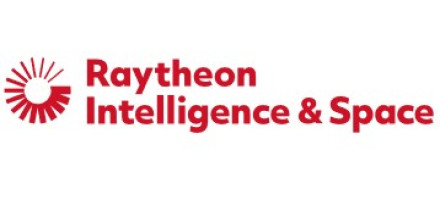GUEST BLOG: Key to JADC2: Converging strategic and tactical communications
BlogJuly 21, 2022

In March 2022, Deputy Defense Secretary Kathleen Hicks signed the Joint All Domain Command and Control (JADC2) Implementation Plan, noting that JADC2 will be critical as the military works to keep pace with the volume and complexity of data in modern warfare.
One notable element that went relatively unreported was the implementation plan’s call for the services to directly integrate nuclear command and control into the broader communications architecture.
Historically, this has not been the case.
Our nation’s leaders rely on strategic nuclear communications to be online 24/7 in any environment to make critical decisions that could ultimately initiate – or stop – a nuclear strike. On the battlefield, armed forces use tactical communications networks to relay orders and military intelligence.
Both types of communications must be resilient enough to withstand electronic attack, and versatile enough to relay information where it’s needed, when it’s needed.
By converging strategic and tactical protected communications, troops and decision-makers will be able to start sharing and accessing information across the battlespace through a more ubiquitous network, which is necessary to combat modern threats more effectively. While achieving this type of network takes time and effort, our armed forces can immediately benefit from using these types of protected communications, connecting them to a broader network, and incrementally upgrading this network over time.
These systems will enable the battlefield commander to be on both tactical and strategic networks to enable a full range of warfighting capabilities in any threat environment. If tactical systems are thwarted, the strategic capabilities will deliver critical data to users.
From undersea to air and space, and back to the ground, information will be able to better flow across this incremental, streamlined network, which was not part of the original protected communications architecture decades ago.
With adversaries considering smaller tactical munitions in a local battlespace, tactical-to-strategic convergence is required to enable our frontline forces to continue to operate in this battle environment.
Key to driving this convergence will be two critical technologies: Artificial intelligence (AI) and miniaturization.
Effective command and control is based on decision-making, with commanders making the best decisions at the speed of relevance. This means that there’s a need for faster communications and greater access to timely information, regardless of distance, to inform these decisions with complete assurance. AI and machine learning (ML) capabilities will play a critical role in gaining data assurance across traditionally disparate networks.
For example, AI can help sift through vast reams of data, with decision-makers in the loop providing the critical insights and conclusions based off the information. Operating this way speeds up the timeline from data to insight.
Additionally, military leaders need portable, miniaturized capabilities to support forward-deployed units. Mobile capabilities equipped with protected communications that work on smaller terminals enable a significant advantage against adversaries, especially when those systems can maintain communications through portable technology in any environment. Success is communications on the move: It looks like a soldier who can easily communicate with others quickly, discreetly, and efficiently in a nontraditional location, delivering critical data so that commanders can make real-time decisions to ensure the success of the mission.
JADC2 will overhaul military communications and enable U.S. armed forces to better handle the massive amount of information they collect and distribute every single day. The strategic-to-tactical convergence of protected communications is key to bolstering JADC2 and should be deemed an urgent initiative to upgrade disparate legacy networks, gain resilience at the edge, and achieve data assurance. The forward-deployed can take advantage of resilient and jam-proof communications from the strategic community, while the strategic community uses the prolific tactical networks, both currently used and in development.
Under such a convergence, decision-makers are armed with the right information at the right time to make decisions in real time for improved national security. It also can serve as a nuclear deterrent: If adversaries know that the message will get through no matter what and that command-and-control networks cannot be disrupted, it could deter them from taking action against the nation and its allies. The combination of JADC2 and strategic-tactical convergence presents the U.S. with a significant enhancement to its defense infrastructure and warfighting capabilities.

Mark Hutchins is Executive Director, Protected Communications Systems, Raytheon Intelligence & Space.
Raytheon Intelligence & Space www.raytheonintelligenceandspace.com/








